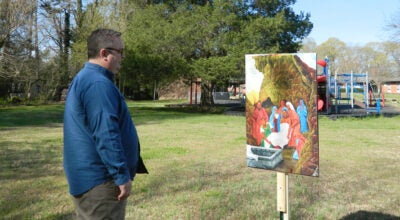Culture shifts make nursing homes feel more like home
Published 12:00 am Sunday, August 11, 2013
A comment almost a decade ago by nursing home culture change advocate Dr. William Thomas about why a nursing home should have a dog led to a new way of thinking for Ted Goins, president of Lutheran Services Carolinas.
That 2004 epiphany was the start of a culture change journey LSC now calls New Pathways, which uses some of Thomas’s concepts and also draws from a program called Wellspring, which seeks to improve quality of care by restructuring the work environment and empowering staff.
The goal of culture change is to de-institutionalize nursing homes and transform them into more homelike and welcoming places for residents, visitors and staff.
To that end, LSC’s newest nursing homes — including Trinity Ridge, which just opened in Hickory — incorporate features that promote culture change, including small “neighborhoods” of 25-30 residents, as well as spas, buffet dining, and playgrounds to welcome young visitors. And yes, dogs are now welcome.
It’s easier to have culture change in a building designed for it, but it’s also true, Goins says, that “culture change is more a state of mind than a building.”
“We learned early on that you can’t mandate culture change. It’s not a top-down directed opportunity,” he said.
Lutheran Services Carolinas tries to plant the seeds for change and then “stay out of the way and let the flowers bloom.”
At Trinity Oaks health and rehab, culture change is woven into the fabric of the community, thanks in part to administrator Bill Johnson, who brings a can-do attitude to resident care.
Residents are offered activities that are a far cry from Bingo.
In June, for example dozens of residents, accompanied by staff members and volunteers, spent the day at the North Carolina Zoo in Asheboro.
For the past several years, residents, staff and volunteers have ventured to the Carolina coast in the spring and fall.
Johnson got the idea while vacationing at Kure Beach. It occurred to him that the Lutheran Retreat Center there would accommodate residents nicely.
With the blessing of Goins and support from others, including Kaye Leonard, the sister of a resident, he made arrangements for a trip that has quickly become a beloved tradition.
It’s an ambitious undertaking, but Johnson thinks the trip is well worth it.
“When you get them down there and they’re on the beach with a beer in their hands, you know you did it for the right reason,” Johnson said. “They’re just thrilled.”
Such trips are probably not something that LSC’s lawyers or insurers would advise, Goins admits, but he believes risk management must sometimes take a back seat to enhancing residents’ experiences.
“The most important factor is the quality of life,” Goins says. “It makes all the difference in the world.”
Johnson believes that residents deserve to get out of the building and into the real world as much as possible – and his staff supports him in that effort.
“I think (it’s important to do) anything you can to make it less of an institution and more of a real life experience. I think we have to try a little harder because we don’t have the physical layout that a lot of the new buildings do, but …you just work with what you’ve got.”
Johnson also notes that culture change efforts encourage and nurture relationships with residents’ family members.
“Families embrace culture change because they want to see residents have a great quality of life. It’s a bonding thing for families and staff members. They all feel like they’re a part of the goal of making life better for the residents.”
Johnson said residents have become so used to being active participants in the outside world that as soon as they’ve finished one outing, they’re asking about the next. “It gives them something to look forward to,” he added.
“It becomes an expectation or way of life. It becomes the norm. And that’s a good thing.”


